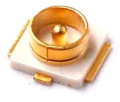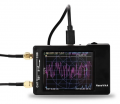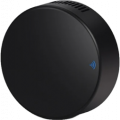Hi to all,
I am undertaking a project to extend the remote control range for pergola louvers controlled by AC304-02 modules, which are generic roller shutter controllers operating at 433.92 MHz. These modules utilize a CMT2210LB RF chip and are paired with a standard Dooya 15-channel remote. The original design includes a planar helical antenna etched directly onto the PCB.
I am considering cutting the trace to this antenna and soldering an SMA connector for attaching an external antenna to improve the range. For those interested, here's a look at the module: AC304 Module Details
I have a few questions:
Would replacing the built-in antenna with an external one effectively extend the control range?
Does anyone have recommendations on where to solder the signal and ground for the SMA connector on this specific PCB?
Are there any potential risks or important considerations I should be aware of with this type of modification?
Alternatively, I'm considering the possibility of using an RF repeater. Does anyone have experience with RF repeaters for 433.92 MHz systems?
I've got a test unit specifically for this purpose, so I'm ready to experiment based on your suggestions.
Any insights, especially from those familiar with RF systems or the CMT2210LB chip, would be greatly appreciated.
Thanks!
I am undertaking a project to extend the remote control range for pergola louvers controlled by AC304-02 modules, which are generic roller shutter controllers operating at 433.92 MHz. These modules utilize a CMT2210LB RF chip and are paired with a standard Dooya 15-channel remote. The original design includes a planar helical antenna etched directly onto the PCB.
I am considering cutting the trace to this antenna and soldering an SMA connector for attaching an external antenna to improve the range. For those interested, here's a look at the module: AC304 Module Details
I have a few questions:
Would replacing the built-in antenna with an external one effectively extend the control range?
Does anyone have recommendations on where to solder the signal and ground for the SMA connector on this specific PCB?
Are there any potential risks or important considerations I should be aware of with this type of modification?
Alternatively, I'm considering the possibility of using an RF repeater. Does anyone have experience with RF repeaters for 433.92 MHz systems?
I've got a test unit specifically for this purpose, so I'm ready to experiment based on your suggestions.
Any insights, especially from those familiar with RF systems or the CMT2210LB chip, would be greatly appreciated.
Thanks!
Attachments
-
1.3 MB Views: 3
-
1.6 MB Views: 3

























